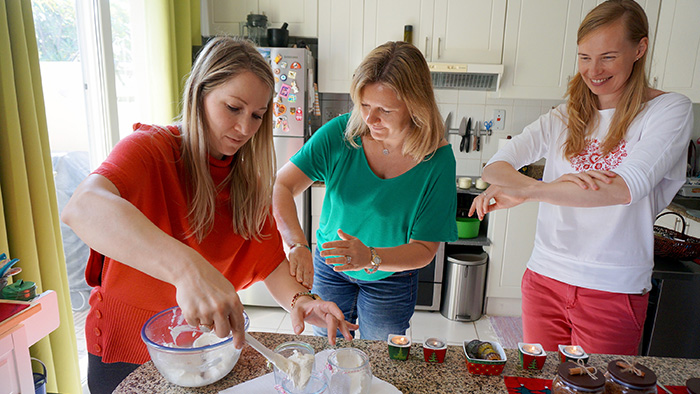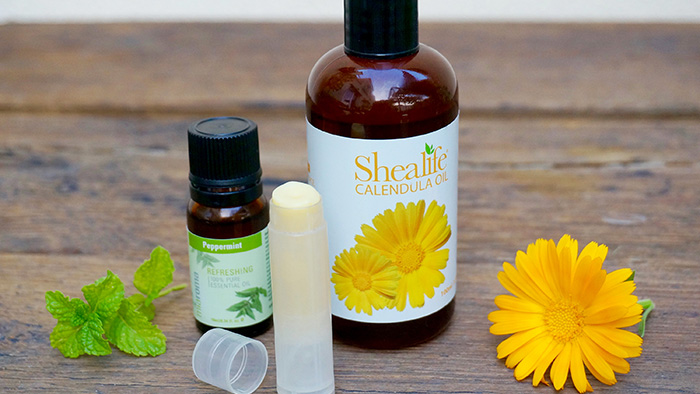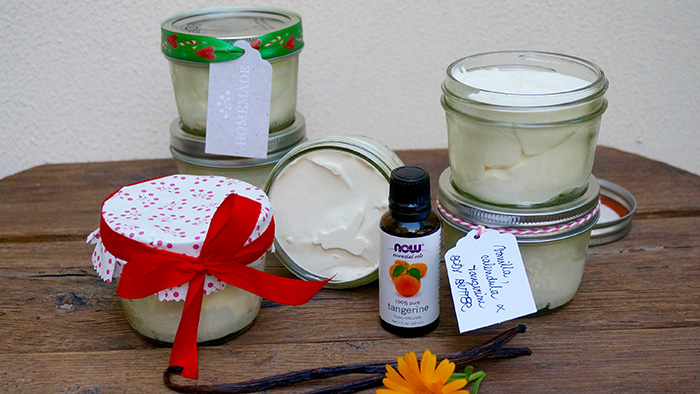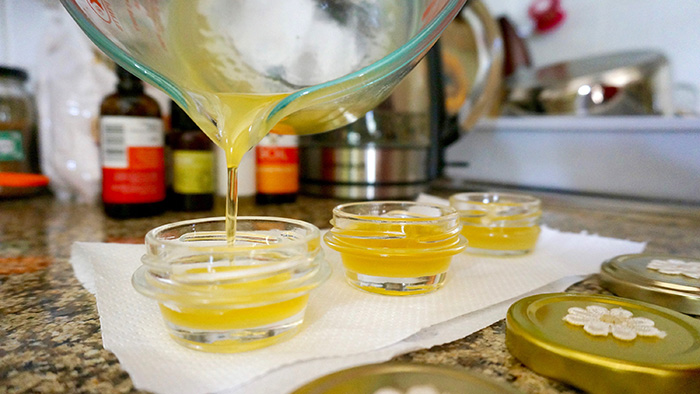Dear readers, this month’s issue is devoted to us, women. We all want to be healthy, fit and beautiful with glowing, radiant skin. Perhaps you are one of many who still believe, that expensive cosmetics and make up will make you look younger and prettier. Let’s reveal the truth behind the beauty and cosmetics industry to make you aware, what is a quality product, why stay away from most of those glamorous looking packages and what are your best options when it comes to skincare.
At the time of writing this article I picked up 7DAYS newspaper at our front door and read the main title: “The Ugly Truth of Beauty Industry”. It claims, that Abu Dhabi Municipality inspectors have visited 2,875 beauty salons across Abu Dhabi in the last year and seized 5,542 packets of dodgy, expired and unlicensed products including cosmetics, herbal remedies and henna. I am pleasantly surprised, that the UAE government has been taking some action to protect their citizens, however, remember, that you have to do most of the job yourself, looking for the healthiest and pure products for yourself and your family.

According to Environmental Working Group (EWG) an average woman puts about 168 chemicals on her body daily. Out of 13,000 chemicals used in cosmetics, only about 10 percent have been evaluated for safety. Clearly, such chemical exposures are not insignificant, especially when they occur virtually daily for a lifetime. Their use has been directly linked to cancer or they are known to cause damage to your brain, reproductive system and other organs.
How did all these chemicals get into your blood and organs?
The skin is our largest organ. What you put on your body topically is not processed and monitored through your liver. Instead, the product goes directly to your bloodstream. If you are not choosing your cosmetics wisely, it is very likely that you have accumulated a huge amount of toxins in your body, which means disease. Just as you create your health, you create your sickness. Have you ever considered cosmetics being a part of a disease making scheme you are responsible for? If you use conventional make-up on a daily basis, you can absorb almost five pounds of chemicals into your body each year, and that’s without adding in body lotions, deodorants, shampoos, conditioners and other personal care products!

This should make you think twice about simple pleasures we take for granted, e.g. having our nails done or simply going for an occasional massage. For instance, in 2000 the EWG released a study showing that 37 nail polishes from 22 companies contained dibutyl phthalate (DBP). DBP is known to cause lifelong reproductive impairments in male rats. DBT is used in nail polish because it increases flexibility and shine. This chemical, which is linked to birth defects in animals, was found at the highest levels in women of childbearing age. Do me a favour and try not using nail polish for the next three months to see the difference in your nails appearance. Instead, after your manicure and pedicure ask your nail technician to simply make your nails shine with polishing board and apply apricot or almond oil on your nails and to your cuticles.
How about bringing your own pure organic massaging oil, next time you go for a massage? Ask your therapist to use it. That way you know, what is applied on your skin and you will get the full benefits of its quality ingredients. This is obviously considering, that you are not in one of the fantastic UAE spa centres which already use pure organic essential oils. (I love Balance Spa!)
Some of the Most Toxic Chemicals You Should Stay Away From
Parabens, chemicals found in deodorants, lotions, hair products, and cosmetics, have been shown to mimic the action of the female hormone estrogen, which can drive the growth of human breast tumors. A study published in 2012 suggested that parabens from antiperspirants and other cosmetics indeed appear to increase your risk of breast cancer.
Phthalates are plasticizing ingredients that have been linked to birth defects in the reproductive system of boys and lower sperm-motility in adult men, among other problems.
Sodium lauryl sulfate, a surfactant, detergent, and emulsifier used in thousands of cosmetic products, as well as in industrial cleaners. It’s present in nearly all shampoos, scalp treatments, hair colours, bleaching agents, toothpastes, body washes, cleansers, make-up foundations, liquid hand soaps, laundry detergents, and bath oils/salts.
Methylisothiazolinone (MIT), a chemical used in shampoo to prevent bacteria from developing, which may have detrimental effects on your nervous system.
Toluene, made from petroleum or coal tar, and found in most synthetic fragrances and nail polish. Chronic exposure is linked to anaemia, lowered blood cell count, liver or kidney damage, and may affect a developing foetus.
How many chemicals does your beauty routine expose you to?
The Environmental Defence group tested 49 different makeup items, including foundations, concealers, powders, blushes, mascaras, eye liners, eye shadows, lipsticks, and lip glosses. Their testing revealed serious heavy metal contamination in virtually all of the products. 96 percent contained lead, 90 percent contained beryllium, 20 percent contained arsenic and the list goes on. What does this mean for a health-conscious person like yourself? When you use body lotion, deodorant, shampoo, or nail polish, you’re taking a chance that you’re applying harmful chemicals to your body, even if the product claims to be non-toxic and safe.

Tips:
• Become smart about your skincare choices.
• Always opt for products made out of preferably organic ingredients.
• The fewer ingredients, the better.
• Avoid products with any above listed ingredients.
• Only put on your skin what you would put in your mouth.
• Instead of face creams have a selection of pure plant oils (like almond, rose hip, argan) and use few drops rubbed in between your palms. Apply on your face and neck just as you would your face cream.
• Only use products from reputable sources, care about how they have been made and whether they have been tested on animals.
• Make your own
What are the best skin care products?
The ones you have made yourself! While I understand that making your own make up can be a real challenge (although it is not impossible), there are still excellent toxic free products from e.g. Dr. Haushka, Sante, Tarte or Lavera.

Consider making your own products or attending one of my cosmetics making workshops! If you have ever cooked a meal, I can guarantee you, that this is no different. It is lots of fun, your body will say thank you and you can share your gifts with family and loved ones. I bet you already have at least 50 percent of all ingredients in your pantry and the rest can be easily bought in one of the health stores, (even supermarkets) or ordered on-line. You will be surprised how easy it is to make your own lip balm, scrub, foot cream, even deodorant!
Here is a recipe for My Favourite Body Butter (can be used as a face cream)
Ingredients:
• 1/4 cup raw virgin coconut oil
• 1/4 cup raw shea butter (mango butter)
• 1/4 raw cup cocoa butter
• 1/4 cup any base oil (apricot, calendula, argan oil)
• Few drops of vitamin E and rosehip oil (optional)
• 15 drops of your favourite essential oil (to be added later)
Melt all ingredients (except essential oil) together in the double boiler, let cool down in the fridge for about 30 minutes. Whip up with an electrical blender for about 5-7 minutes and return back to the fridge for another 10 minutes. Add 15 drops of any essential oil and whip again for another 10 minutes until the mixture resembles a smooth cream. Transfer in clean glass jars and place in the fridge. You can keep one jar in your bathroom. Good for up to 6 months.
For more recipes you can visit my website www.ivanahph.com or attend one of my cosmetics making workshops. Send your queries on Health Powerhouse by emailing me at info@ivanahph.com. I am looking forward to have you!
Words + Photos by: Ivana Chiles

